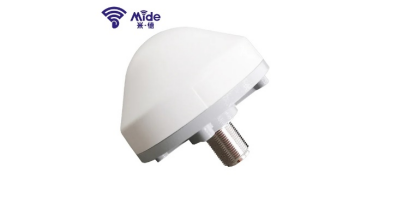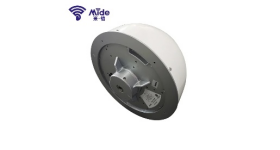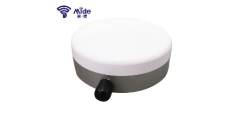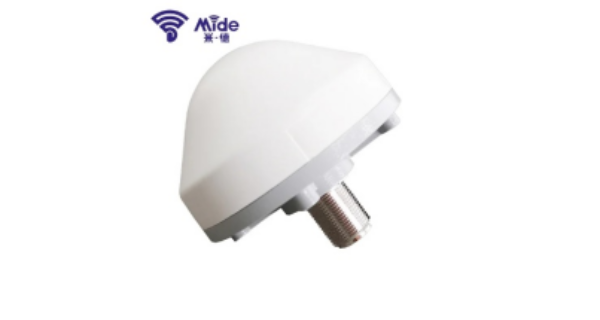A GPS antenna is a device that receives radio signals from GPS satellites at varying frequencies. The antenna expands the signals and converts them into electronic signals so that they can be interpreted by a GPS receiver. The GPS receiver then uses these signals to give an accurate estimate of the receiver's location.
Simply put, a GPS antenna helps you establish connectivity to the Global Positioning System (GPS). It is a system that was initially owned by the US Department of Defence. For years, GPS usage was limited for the military, but from 1983 onwards, civilians have been using it as well.
If you've recently acquired a GPS antenna and are unsure of how to use it, this article should answer any questions you may have.

Some Basic Terms
Here are some of the basic terms you need to know before diving deep into using your GPS antenna.
GPS Antenna Splitter
A GPS splitter is a device that allows you to connect an antenna to two receivers simultaneously.
GPS Antenna Input
The GPS antenna input is used for satellite radio and GPS.
GPS Antenna Cable
GPS antenna cables, primarily coaxial cables, are wires used to transmit GPS signals from a GPS antenna to a GPS receiver.
Some cables can be used to connect a GPS device with an external GPS antenna or even an internal GPS antenna installed within a separate device. At one end of these cables, there is a radio frequency connector that connects with the antenna.
GPS cables (coaxial cable) are usually short and often double shielded to keep signal loss to a minimum. The lower your signal loss or variance, the more accurate your GPS readings will be.
GPS Antenna Frequency
The antenna frequency is the number of wave cycles per second. GPS signals are broadcast at sub-2 GHz frequencies by using the L-band of the radio frequency spectrum.
Each GPS satellite uses two types of frequencies to transmit data, L1 (1575.42 Mhz) and L2 (1227.60 MHz).

GPS Antenna Mount
A GPS Antenna mount is the mount used to attach a GPS antenna.
Typically, you can install a GPS antenna in one of two ways; wall mounting or pole mounting. In both cases, keep in mind to face the mounted antennas towards the sky for best results.
Types of GPS Antenna
GPS Antenna Types
There are two major types of GPS antennas: patch and quadrifilar helix (or quad helix for short). Quad helix antennas offer better isolation, while the patch antennas offer more gain. Most GPS receivers also come with in-built antennas.
Are GPS Antennas Directional?
No, GPS antennas are usually omnidirectional. This means that they can receive and transmit signals from and to different directions equally.
GPS Antenna vs. Receiver
A GPS receiver is a device that locates multiple satellites, calculates their distances from one another, and then calculates its own distance from those satellites. This process of triangulation is what makes GPS receivers so accurate. The GPS antenna is responsible for converting and amplifying signals generated by the receiver, as well as interpreting signals from the satellite network.
Most GPS receivers include a small omnidirectional antenna.
Active GPS Antenna vs. Passive
GPS antennas can be either active or passive. An active antenna has an amplification stage, giving it greater accuracy and dependability over a wider reception range. Active GPS antennas are more complex than passive antennas and are more challenging to install.
In contrast, passive GPS antennas have no amplification stage. Their accuracy is still adequate for most consumer applications, however.
Workings of a GPS Antenna
How Does a GPS Antenna work?
Our earth is surrounded by numerous satellites that transmit radio signals down to you.
-
The GPS antenna sends a signal to the satellites which the satellites then return.
-
The signals are then processed by the receiver, which will calculate the time of arrival (TOA;
-
at what time the initial signal returned from the satellite network to the receiver) and time of flight (TOF;
-
how long it took for the signal to return).
-
Using this data as collected from multiple satellites, the receiver than calculates its distance from each of the satellites it has pinged, triangulating its own current location.
Multiple cycles of this process occur simultaneously, and so the receiver can also extrapolate its own speed and direction of travel.
Sometimes signals moving between the receiver and satellite network are delayed by interference in the upper atmosphere. In these cases, the receiver compensates for the delay when making its calculations.

How Does a Directional Antenna Work?
A directional antenna receives signals efficiently from just one direction. Directional antennas are more energy efficient, as they're not sending and receiving information from every direction, instead confining themselves to a single point.
In this direction, they may pick up a weaker or more distant signal than an omnidirectional antenna using the same amount of power.
How to Use a GPS Antenna?
Generally, the internal GPS antennas work fine on most navigation devices. However, you may want to supplement your receiver with an additional antenna if it's older or under-powered.
External antennas are often used when the path between the sky and your GPS device is unclear or restricted. In addition, external antennas can help increase the speed and accuracy of older GPS receivers.
Can a GPS Antenna Go Bad?
A GPS antenna could go bad if one or more of its components fails. If your GPS antenna stops working, it will need to be replaced. If the internal antenna on a GPS receiver stops working, you can replace it with an external antenna rather than having to replace the entire receiver.
One common point of failure in a GPS antenna is the balun. The balun's job is to convert balanced signals into unbalanced signals. They're usually very durable, but are vulnerable to extreme temperatures. In some cases, a balun can rust. The wires within an antenna are also vulnerable to damage, and even external damage to the antenna's housing can cause it to become less effective over time.
Testing a GPS Antenna
How to Test a GPS Antenna?
You can test the performance of a GPS antenna with a spectrum analyzer.
A spectrum analyzer is a device that evaluates the signals reflected from your antenna. Keep in mind that to test the performance of a GPS antenna you must connect it to a receiver.
Apart from that, you must also watch out for two things:
-
Signal degradation. Whenever a GPS receiver pulls signals from a satellite through an antenna, it suffers signal degradation. The reasons may vary, from obstruction caused by trees or high buildings to any sort of jamming, absorption, or delay in the atmosphere. A little bit of signal degradation is normal, but too much can interfere with ordinary function of your GPS system.
-
Low noise amplifier. GPS antennas have two essential parts: an antenna assembly, and a low-noise amplifier. The latter is a semiconductor chip and susceptible to overload. That's because it is made of gallium arsenide, which is highly sensitive to voltage. So, while testing your GPS antenna, be sure to operate at low to moderate voltages to avoid damaging your amplifier.
How to Check Your GPS Antenna with a Multimeter?
A multimeter is an instrument that measures the electric current, voltage, and resistance of electronic devices over a variety of ranges. If you want to check your GPS antenna's resistance, you need to set the unit measurement of your multimeter to ohms, denoted by the "Ω" symbol.
Then, follow these steps to get the most accurate results when testing your GPS antenna's resistance.
-
Detach your antenna cable from the receiver.
-
Next, pick one cord of the multimeter and touch its end to the antenna's metal part. Now, pick the second cord of the multimeter and touch its end to the antenna cable's end.
-
Ensure that the reading on the multimeter is zero. If it is not, you may be using a damaged cable or antenna. This could prevent GPS signals from reaching the receiver properly.
-
Now, touch one end of the multimeter cord to the metal core of the antenna cable connector and the other to a grounded object.
-
Again, the reading should be zero, or else your antenna may be faulty.
Do you want to discover our wide range of robust whole GNSS industry products and reliable high-precision solutions? Contact us now at Mide to take your GPS technology to the next level!






